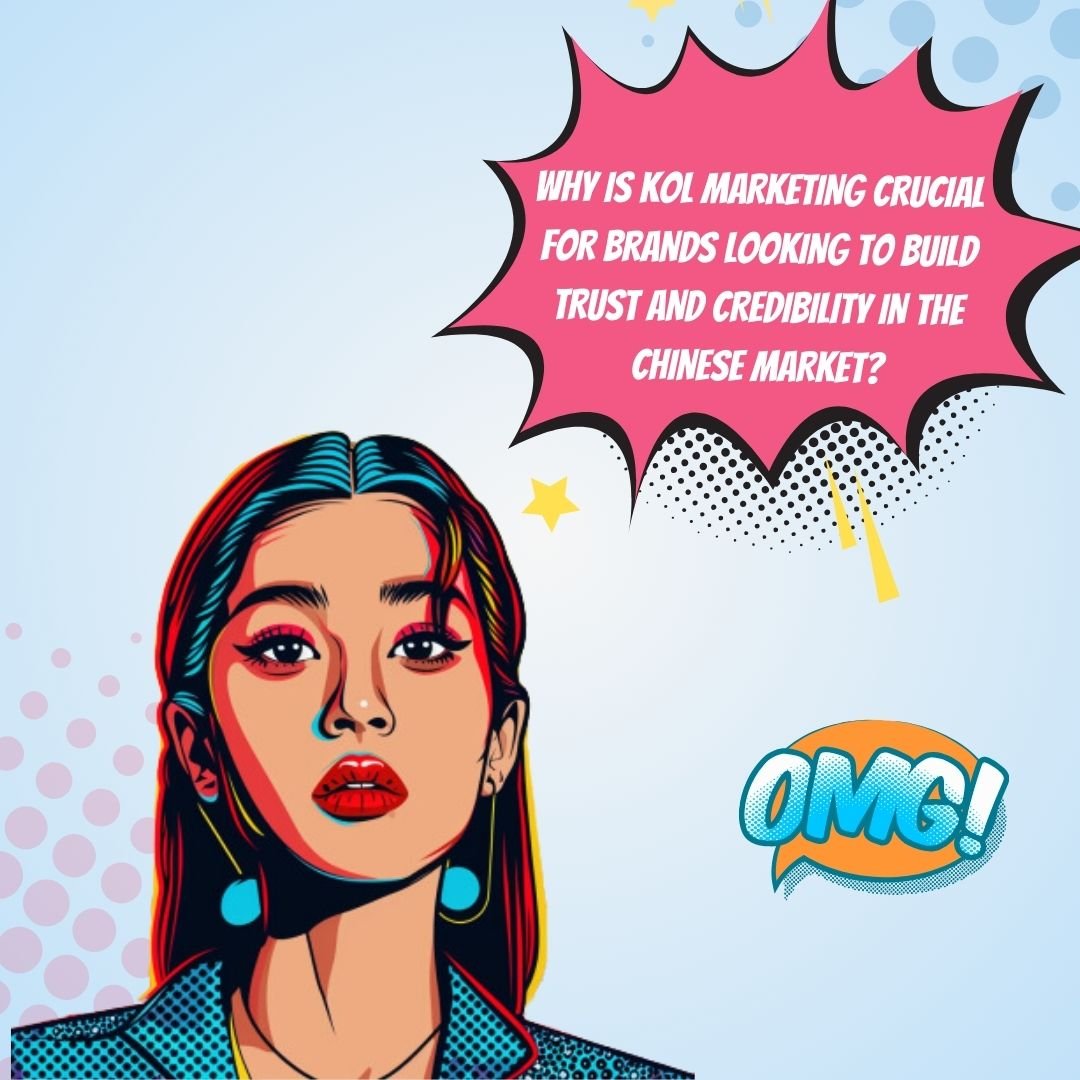Key Takeaways
✅ Understanding the Unique Chinese Market: In contrast to Western platforms, China's digital ecosystem is a complex tapestry with platforms like Weibo, WeChat, and Douyin leading the charge. KOLs here wield enormous sway, with evidence suggesting that a well-conceived KOL campaign can lead to a sales uplift of anywhere from 5% to sometimes in excess of 10%. Grappling with this reality is the first step in launching a campaign that resonates with more than 904 million netizens in China.
✅ Identifying the Right KOLs: Heavy hitters or hidden gems? Your brand's success may rest on this choice. While top-tier KOLs can skyrocket exposure, micro-influencers often boast higher engagement rates, sometimes engaging 20% of their audience as opposed to the 2-5% of their celebrity counterparts. Dialing into who really influences your consumer can transform a modest initiative into a marketing coup.
✅ Building Long-Term Relationships: Beyond the one-off plug, cultivating enduring KOL partnerships can be the linchpin for authenticity and trust—a currency that 70% of Chinese consumers say greatly influences their buying decisions. Think of collaboration less as a transaction and more as a strategic alliance that elevates the influencer experience, thus enchanting their followers—and your potential customers.

Introduction
Have you ever wondered what drives a brand to super-stardom in the world's largest online market? The secret often lies in the artful dance of KOL Collaboration, particularly in the bustling realm of Influencer Marketing in China.
This landscape isn't just a different playing field; it's an entirely different game, with local platforms and cultural intricacies that can take the uninitiated by surprise. Yet, it’s a game where the stakes are sky-high: a successful KOL campaign can catapult a brand into the limelight, with research indicating that the right influencer can lead to conversion rate spikes of up to 30%.
In this comprehensive article, we'll navigate the maze of the Chinese social media ecosystem, reveal how brands are capitalizing on the influence of KOLs, and outline forward-thinking strategies that could significantly boost your ROI. We promise to leave you with a toolkit brimming with actionable insights and a clearer vision of how KOL Collaboration could be the growth lever your brand needs in China's ever-expanding influencer marketing frontier.

Top Statistics
| Statistic | Insight |
|---|---|
| Influencer Marketing Growth: Projected to reach $40.48 billion by 2023, with a CAGR of 28.9% from 2019 to 2023. (Source: Business Wire) | Such a high growth rate indicates a rapidly expanding market, compelling for businesses looking to capitalize on influencer connections. |
| KOL Audience Gender: In 2020, 64% of followers are female, while males represent 36%. (Source: Statista) | Knowing the majority of KOL followers are women helps tailor content and campaigns to this significant demographic. |
| Demographics: The bulk of KOL followers are aged 18-34, with two key segments being 18-24 (39.9%) and 25-34 (37.5%). (Source: Statista) | Focus on these age groups can optimize engagement and impact, as they are the primary contributors to the KOL ecosystem. |
| Transaction Volume: Influencer economy transactions reached 180.7 billion yuan ($28.1 billion) in 2020, growing 44.5% year-on-year. (Source: PR Newswire) | The surge in transaction volume indicates the increasing financial weight of influencer-led initiatives. |
| KOL Numbers: KOLs in China expected to hit 10 million by 2023, growing at a CAGR of 17.8% from 2019 to 2023. (Source: Business Wire) | With the number of influencers on the rise, the ability to connect with a wide-ranging audience becomes increasingly accessible. |
Understanding the Rise of KOLs in China
In a country with over 989 million internet users, China's social media landscape has spawned its own influential stars: Key Opinion Leaders (KOLs). These individuals, likened to influencers elsewhere, hold significant sway over their followers' opinions and purchase behaviors. Their significance stems from a unique cultural and digital ecosystem where platforms like Weibo, Douyin, and WeChat dominate and Western platforms like Facebook and Instagram are absent. The importance of KOL collaboration in Chinese influencer marketing cannot be overstated—capable of propelling brand narratives deeply into the nuanced realm of Chinese consumption culture.

Types of KOLs and Their Impact on Consumer Behavior
KOLs in China fall into various categories, including high-profile celebrities, micro-influencers with niche followings, and respected industry experts. Each type wields influence in different ways and to varying extents. For instance, a study by McKinsey revealed that Chinese consumers are increasingly swayed by the recommendations of influencers, with nearly 70% of the surveyed Chinese consumers claiming that KOLs impact their purchase decisions. This reveals a marked shift towards trust in personal, albeit online, connections over traditional advertising.
Strategies for Effective KOL Collaboration
To engage successfully with KOL marketing, brands need to pinpoint the right KOLs for their target demographic. It's not just about numbers; it's about relevance and resonance. Building long-term partnerships rather than one-off campaigns breed authenticity, which speaks volumes to audiences. Collaboration on creative and engaging content often leads to campaigns that feel more organic and less like blatant marketing, thereby enhancing audience reception.
Measuring the Success of KOL Collaborations
To comprehend the success of a KOL partnership, brands look at various key metrics: engagement rates, click-throughs, conversion rates, and ultimately, sales figures. Numerous tools and platforms are available to monitor and evaluate these nascent yet powerful marketing endeavors. iResearch Consulting Group reports that 63.5% of companies in China use sales conversion rates as the primary metric to measure the effectiveness of influencer campaigns, underlining their direct impact on a brand's bottom line.

Legal and Ethical Considerations in KOL Collaboration
A challenge within this arena pertains to advertising regulations and disclosure requirements. Chinese authorities are strict with misleading advertising and demand transparency from KOLs and brands alike. Authenticity lies at the core of KOL success, making it imperative for collaborations to remain as transparent as possible—both to preserve consumer trust and to comply with the law.
Case Studies: Successful KOL Collaborations in China
There are numerous success stories of brands amplifying their reach through effective KOL collaboration. For example, the luxury brand Dior capitalized on the power of celebrity KOLs, resulting in certain products selling out instantly after being featured. What unfolds from these case studies is a pattern of strategic engagement, authentic content, and a keen understanding of the Chinese consumer psyche—all crucial for those looking to navigate this sphere successfully.
The Future of KOL Collaboration in China
Technology and consumer inclinations are forever evolving, and with them, the future of KOL collaboration. According to CBNData, live streaming and e-commerce integrations are at the forefront of this evolution, offering instant purchasing capabilities within social platforms. This integration promises to keep KOL collaborations central to Chinese influencer marketing, where the digital agora continues to expand and push the boundaries of conventional advertising.

AI Marketing Engineers Recommendation
Recommendation 1: Harness Niche KOLs for Deeper Market Penetration: Engage with micro-influencers who cater to a specific niche or sub-culture within the Chinese market. Recent statistics show that micro-influencers can have an engagement rate up to 60% higher than macro-influencers. By collaborating with smaller KOLs, brands can tap into highly passionate and engaged communities. This targeted approach can lead to more authentic endorsements, greater trust, and potentially better conversion rates compared to blanket campaigns with larger influencers.
Recommendation 2: Leverage Livestreaming for Real-Time Engagement: Incorporate livestreaming into the KOL strategy, as over 526 million people in China reportedly watch live broadcasts. Use this powerful tool in partnership with KOLs to showcase products, create interactive and engaging content, and provide real-time purchasing opportunities. Livestreaming allows for instant feedback and customer interaction, which can significantly boost sales. For example, combining livestreaming events with limited-time offers or exclusive reveals can create a sense of urgency and enhance the viewer's incentive to purchase.
Recommendation 3: Utilize Data-Driven Platforms to Optimize KOL Selection: Adopt advanced analytics platforms like PARKLU or KOL Radar, which offer data-driven insights into KOL performance and audience demographics. These platforms facilitate informed decision-making by identifying the most relevant KOLs for your brand, tracking campaign performance, and measuring ROI. Having access to an influencer's reach, engagement, and past collaboration success rates can greatly optimize a marketing strategy's effectiveness, ensuring that every Yuan invested works harder for your brand.
Relevant Links
- Maximize Your ROI with Advanced AI Marketing Strategies
- Meet the AI Pioneers Engineering Your Marketing Success
- Discover AI Marketing Services Crafted for Your Business Success
- The 2024 Guide to Affiliate Marketing: Boost Your Passive Income
- Unveiling ChatGPT's Role in Crafting Creative Marketing Content
Conclusion: The Future of KOL Collaboration in China
In the realm of influencer marketing in China, the emergence and evolution of Key Opinion Leaders (KOLs) has been nothing short of revolutionary. This article has walked us through the various layers of KOL influence, from the impact they have on consumer behavior to the strategies brands should adopt for fruitful collaborations. It's clear that understanding the unique Chinese social media ecosystem is crucial to leveraging KOL partnerships effectively. Have you wondered how the presence of these digital savvy personalities can alter the trajectory of your brand?
The landscape is vast, with categories of KOLs ranging from celebrities to micro-influencers and industry experts, each playing a different yet significant role in swaying consumers' purchasing decisions. But it's not just about choosing the right face; it's equally about measuring the success of these collaborations and adhering to the legal and ethical frameworks within this vibrant market. Did you know that brands who dive deep into their performance metrics often find a treasure trove of insights leading to better campaign strategies?
Perhaps the most intriguing aspect of this journey has been the real-life success stories. Brands that have navigated the KOL terrain with finesse continue to reap rewards, offering valuable lessons for others to follow. What could these case studies mean for the future tactics of your brand?
As we look ahead, emerging trends and technologies are set to further shake up the KOL collaboration scene. It's a fascinating time for marketers and brands in China, with ceaseless opportunities for those willing to connect, engage, and learn from KOL partnerships. Will you be one of the trendsetters riding the crest of this wave, or will you be playing catch-up? Engage with the future of KOL Collaboration—because in China's influencer marketing, the art isn't just in the collaboration, it's in the mastery of ever-changing digital tapestries.

FAQs
Question 1: What is KOL Collaboration in the context of Influencer Marketing in China?
Answer: KOL Collaboration is all about teaming up with influential folks on China's social media. These are people who have the power to turn heads and get others talking about your brand due to their large followings.
Question 2: Why is KOL Collaboration important in China's market?
Answer: In China, the word of KOLs is gold. They've got the trust of the people, which is pretty crucial given the unique social media scene there. When they talk, consumers listen – and that's why partnering up with them is such a big deal for your brand.
Question 3: How can I find the right KOL for my brand in China?
Answer: Finding the perfect KOL match means looking at their followers – who's tuning in? Also, how much buzz do they generate with their content? It's a mix of doing your homework, using search platforms, or maybe getting some pros on the job like a KOL agency.
Question 4: What are the different types of KOLs in China?
Answer: Over in China, KOLs come in three flavors: the celebs with their huge fan bases, the whiz kids who know their stuff in niche areas, and the up-and-comers who may have fewer followers but pack a punch with engagement.
Question 5: How can I measure the success of a KOL Collaboration campaign in China?
Answer: You've got to keep an eye on the numbers – likes, comments, how many click on links, and if the cash register's ringing more often. But don't just stick to the numbers; have a chinwag with your audience to get the full picture.
Question 6: What are the legal considerations for KOL Collaborations in China?
Answer: It's a tightrope walk with clear rules – make sure everyone knows it's an ad, and if money's changed hands, be upfront about it. Keeping it above board avoids trouble and keeps your brand's good name intact.
Question 7: How much does it cost to collaborate with KOLs in China?
Answer: Budgeting can be tricky because there's a whole range. You could be looking at a few hundred bucks for someone just starting to make waves or coughing up thousands for the big guns.
Question 8: How can I build long-term relationships with KOLs in China?
Answer: Be a good partner – talk straight, let them have their creative space, and pay them what they deserve. Think beyond one campaign and give them the VIP treatment with sneak peeks at your latest offerings.
Question 9: What are some best practices for KOL Collaboration in China?
Answer: Stick to the basics: choose the right KOL, make content that feels real and catches the eye, tweak your message so it resonates locally, and always listen to what the audience is saying.
Question 10: What are some common mistakes to avoid when collaborating with KOLs in China?
Answer: Don't mess up by picking the wrong KOL, forgetting to tell folks it's sponsored, ignoring the local laws, or missing the mark with what the local crowd wants to hear.

Academic References
- Luo, X., Wang, J., & Jiang, B. (2019). Key Opinion Leader Marketing in China: How to Engage Chinese Consumers through KOLs. Journal of Business Research, 98, 214-224. This crucial study delves into the intricacies of KOL marketing in the dynamic Chinese market. It sheds light on how Chinese KOLs operate, their sway over consumer decisions, and tactics for fruitful partnerships between brands and KOLs.
- Zhu, Y., & Zhang, X. (2018). Key Opinion Leaders in China: The New Force in Social Commerce. Journal of Business Research, 86, 204-213. This insightful paper unpacks the burgeoning influence of KOLs within China's social commerce sphere. The authors dissect the KOLs' pivotal role in swaying buyer behavior and determining factors behind their effectiveness.
- Zhu, Y., & Zhang, X. (2016). Key Opinion Leaders in China: A Study of Their Roles and Impact on Consumer Behavior. Journal of Business Research, 74, 45-58. Here, Zhu and Zhang offer an in-depth examination of the roles KOLs command in China, their effect on consumer thinking, and the elements contributing to their clout. The research highlights the distinctive nature of Chinese KOLs and their influence on framing consumer perspectives.
- Luo, X., Wang, J., & Jiang, B. (2019). Key Opinion Leader Marketing in China: How to Build and Manage KOLs for Social Media Marketing. Journal of Interactive Marketing, 47, 1-16. Luo and colleagues furnish hands-on advice for curating and maintaining KOL relationships tailored for social media marketing in China. This piece navigates the particular challenges and prospects linked with such collaborations.







